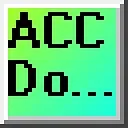0:00
imagine a world where machines think and
0:02
act on their own making split-second
0:04
decisions that keep entire factories
0:07
smoothly this isn't Science Fiction it's
0:10
the reality of modern Industrial
0:12
Automation powered by programmable logic
0:19
plc's programmable logic controllers or
0:21
plc's are the backbone of modern
0:23
Industrial Automation whether you're
0:25
working in manufacturing process control
0:27
or building automation understanding how
0:30
how to program plc's is crucial today
0:33
we'll break down the five essential
0:35
steps to PLC programming that every
0:37
aspiring automation engineer should know
0:41
before we dive into the steps let's
0:42
quickly Define what a PLC is a
0:45
programmable logic controller is a
0:47
digital computer used for automation of
0:50
processes it's designed to control
0:52
machines and processes in real time
0:55
making decisions based on input signals
0:58
and pre-programmed instructions
1:00
now let's explore the five steps to PLC
1:03
programming step one Define the control
1:06
problem this initial step involves
1:08
clearly identifying what you want your
1:09
PLC to accomplish you need to understand
1:13
the process or machine you're automating
1:16
including all inputs outputs and the
1:18
desired behavior of the system this step
1:21
sets the foundation for your entire
1:23
program step two create a flowchart or
1:26
pseudo code before writing any actual
1:28
code it's Cru crucial to map out the
1:31
logic of your program a flowchart or
1:33
pseudo code helps you visualize the
1:35
sequence of operations and decision
1:37
points in your control system this step
1:40
allows you to catch potential issues
1:42
early and ensures a more efficient
1:46
process step three write the PLC program
1:50
using the flowchart as a guide you'll
1:52
now write the actual PLC program this
1:56
typically involves using one of the IEC
1:58
6113 1-3 programming languages such as
2:02
ladder logic function block diagram or
2:05
structured text the choice of language
2:08
often depends on the specific
2:10
application and your personal preference
2:13
step four test and debug the program
2:16
once your program is written it's time
2:17
to test it thoroughly this involves
2:19
simulating various input conditions and
2:21
verifying that the outputs respond
2:23
correctly debugging is a critical part
2:26
of this step where you identify and fix
2:28
any logical errors or unexpected
2:30
behaviors in your program step five
2:34
Implement and monitor the final step is
2:36
to upload your program to the PC and
2:38
implement it in the actual system this
2:41
step also includes monitoring the
2:43
program's performance in real world
2:45
conditions making any necessary
2:47
adjustments and documenting the final
2:49
program for future reference or
2:52
troubleshooting mastering these five
2:54
steps is essential for successful PLC
2:57
programming each step builds upon the
2:59
previous S one creating a systematic
3:01
approach to developing reliable and
3:04
efficient control systems by following
3:06
this process you'll be well equipped to
3:08
tackle a wide range of automation
3:10
challenges in various
3:12
Industries remember practice and
3:15
hands-on experience are key to becoming
3:16
proficient in PLC programming let's
3:20
recap the five essential steps for PLC
3:22
programming we've covered today step one
3:26
Define the control problem clearly
3:28
identify what you want your PLC to
3:31
accomplish step two create a flowchart
3:33
or pseudo code map out the logic of your
3:36
program before writing any code step
3:39
three write the PLC program using a
3:42
suitable programming language like
3:43
ladder logic or structured text step
3:47
four test and debug your program
3:49
thoroughly to ensure it responds
3:50
correctly to various input conditions
3:53
step five implement the program in the
3:56
actual system and monitor its
3:57
performance making adjustments is
4:00
necessary by mastering these five steps
4:03
you'll be well equipped to tackle a wide
4:05
range of automation challenges in
4:06
various Industries we've explored the
4:09
five essential steps for PLC programming
4:12
providing you with a solid foundation
4:14
for your journey in Industrial
4:16
Automation thank you for watching we
4:19
hope this guide helps you in your
4:20
automation engineering career remember
4:22
practice makes perfect in PLC
4:24
programming to start learning now click
4:27
here click here to learn how you can use
4:29
utilize AI in your PLC programming

